'I loved/loathed my 1960s high-rise block'
- Published

'Long live the 1960s tower blocks': Geoff Lowe and his wife Molly eventually reached their dream home
A recent Magazine article looked back at the era of radical concrete - where the post-war landscape came to be dominated by high-rise buildings and new towns.
A collection of slides in the article provided a window into a time when optimistic town planners believed that society could be reinvented - although the period remains massively controversial.
Many accuse the town planners of having destroyed traditional neighbourhoods in an attempt to modernise society. Streets of terraced houses with tight-knit communities were torn down.
But for many people leaving slum housing these new towns and concrete blocks were often initially welcome.
The article prompted a significant response from readers, who wrote in with their own memories and experiences of living in these areas.
Here's a selection.

Shoreham-by-Sea, West Sussex
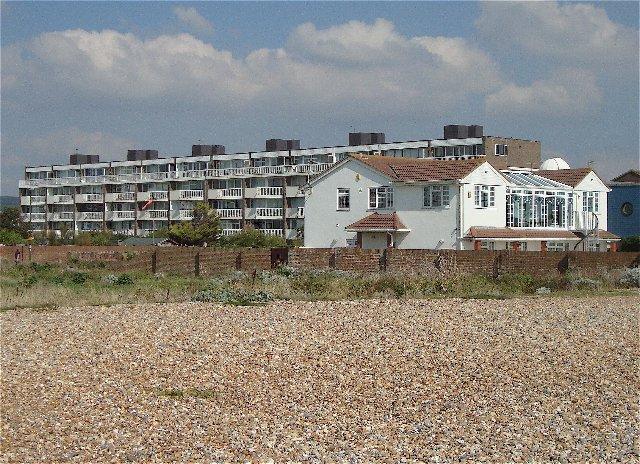
Flats on the beachfront at Shoreham-by-Sea
My first job as an assistant lecturer at Newcastle College of Art was in 1960. My wife and I (pictured top) looked for a place to live - a new block of flats at Whitley Bay caught our attention, and after a viewing, which showed the breathtaking vista of the sea, we hardly slept that night. Unfortunately my £42 a month wasn't good enough to secure a mortgage on the £3000 asking price! However we are now retired on the south coast near Brighton in a penthouse apartment at Atlantic Court which was built around the same time. Luckily some folk on the south coast love the 1960s style, and the flats are spacious by comparison to the mean, "cram as many in as you can" to make as much profit as possible [type of developments]. Long live the 1960s tower blocks. Geoff Lowe, Shoreham-by-Sea, West Sussex

St Mary Cray, Bromley
Alas, my whole life has been completely coloured by the social and environmental experiments in housing of the post-war period. Now I am middle-aged, I understand that they were exhausted men and women tasked with rebuilding their country - indeed nation - after a devastating and financially crippling global conflict. The council estate I grew up on in St Mary Cray, in Bromley, was meant to be a radical improvement from the urban squalor. I know it was for a time but by the 1970s and 1980s, the remoteness of the estate, which was unacceptably far away from shops and bus routes, the estrangement from community where neighbours did not communicate with each other, and the general lack of facilities, created a hellish scenario. My immigrant family imploded on the estate and despite being a focused autodidact who did reach university, my upbringing on an estate has lingered like a negative miasma in my life. I learned little except how to have a burning ambition to get out and not return. My elderly parents are now stuck there which fills me with sadness and shame that I am not wealthy enough to move them. Sian Tone Johnston, London
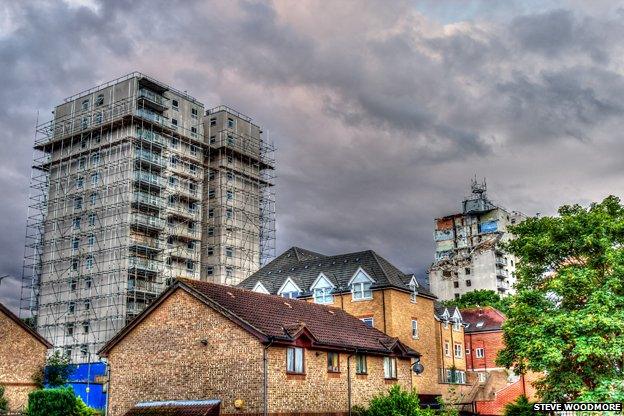
Some of the high-rise tower blocks that loomed over St Mary Cray have now been demolished

Thamesmead, London
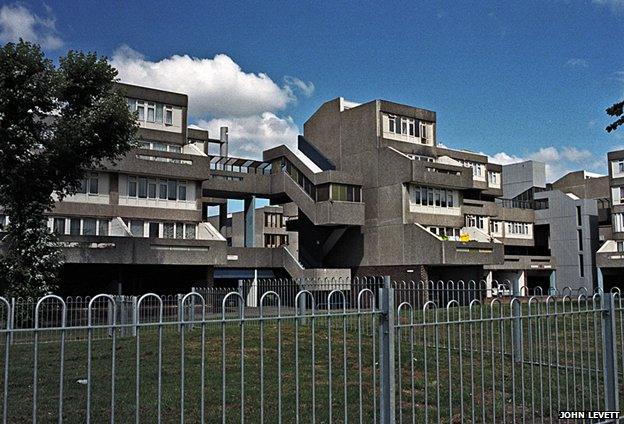
The first phase of Thamesmead was built in the 1960s
I lived on Thamesmead, as a first generation tenant. I was two when my family moved there. I was happy there and felt a sense of community. However there was a stigma attached to those who lived there and I found it difficult with my career in the city. Looking back it was a very modern approach to community where most people came from different backgrounds, including the teachers at my school. I also became fascinated by Clockwork Orange as we were made aware of the connection [of it being filmed there]. John Brierley, Kent
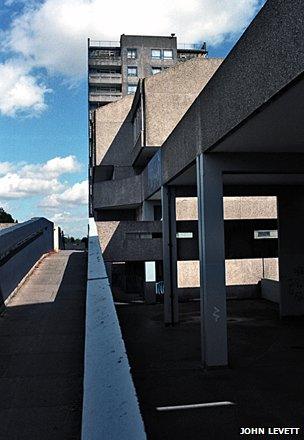
I've lived on the estate of Thamesmead since 1971. As a small child it was a great place to live, as with all neighbourhoods at that time, doors were not locked and everybody knew everybody. Children could not get away with anything without one of the neighbours giving you a clip round the ear and parents invariably backed up the neighbour not their child. Those were also the days when at least one parent was at home all day. Now I don't see my neighbours from one week to the next. The problems which these estates encounter now are not all down to the fact that they are classed as old and dated. In the case of Thamesmead, which is still predominantly social housing, our landlord Gallions Housing has to renew the fixtures and fittings on a regular basis. We have had new kitchens, new bathrooms, and they are at present embarking on renewing all the old metal framed windows with double glazing. Unfortunately most of the problems stem from the people that live on the estates and their "don't care" attitude, rather than the bricks and mortar or concrete pillars. Caroline Pilbro, Thamesmead
I grew up on Thamesmead and as a child it was great due to the open spaces and things to do. As a teenager and young adult it became a hellhole due to the crime, dark underground passageways, poorly lit parks and abandoned garages in which the gangs would congregate. Andrew, London

Tipton, West Midlands
I used to live from 1998 to 2004 in a place called Bolton Court in Tipton, in the West Midlands. I was 17 at the time. Used to call it Beirut-in-a-Tower Block. It was where the local council would put all the young single people out the way. Kids used to stick the fire hoses through your letter box, lifts always breaking down. But as I do like my local history, the blocks were cutting edge in the 1960s when they were built, everyone wanted to live there. There where three blocks with garages as well until about 1987, when they got rid of one block and removed all the garages. The entire blocks got pulled down about 2007. Now it's just empty land. Steven Jones, Tipton

Harlow

Frank Milner's house in Harlow, 1961
We lived in Harlow from 1958 until 1969, having moved from London. There is quite a clear difference between the quality of build, space, amenities etc between eg Harlow and Stevenage compared with Sheffield and Newcastle. Only from about 1965 on - when cheaper, concrete kit houses and denser use of land came in, followed later by the dreadful "infilling" policy - did Harlow start to become less attractive. Harlow's proximity to London was very important, served by Tube from Epping, main line trains, and buses from Old Harlow and the town centre. It was never isolated. It felt good to live in as a child, with the proximity to countryside and plenty of temporary work from 14 on farms, and in factories from 16 on. We lived in a detached "middle class" house with a garage. Harlow was planned for a social mix from the start. I don't consider it a failure at all - unlike tower blocks in Liverpool or some of Glasgow's dire overspill estates. Frank Milner, Wallasey England
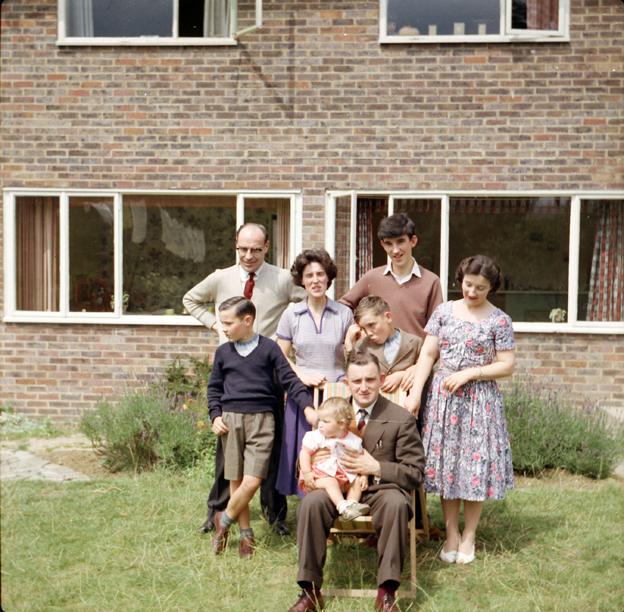
Milner as an 11-year-old, in the blue jumper, with his family in the garden in 1961

Basildon
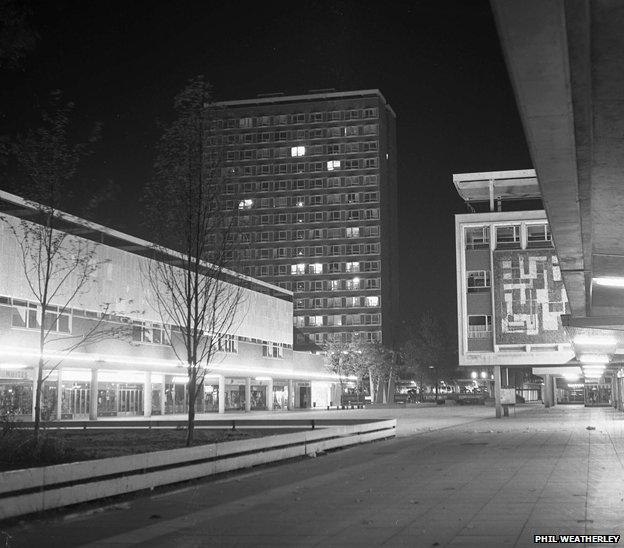
Basildon was created as a new town in 1948
I moved to Basildon in 1955 from Forest Gate's terraces. The transformation was miraculous for me, born 1948. It corresponded to widening horizons, of open landscape, greens, fields, vast estuary and space. Of radiators and central heating, a bath with hot water - fixed, rather than hanging up outside to be filled from "The Copper". Felt like luxury. The communities from where we came were not moved wholesale, intact, but one opted to go and so were mixed up with others, predominantly from east London. The sense of equality was there, of a beneficent world and of the idea that the government really were there to improve man's lot rather than make a buck. Indeed we had never had it so good, we urban poor.
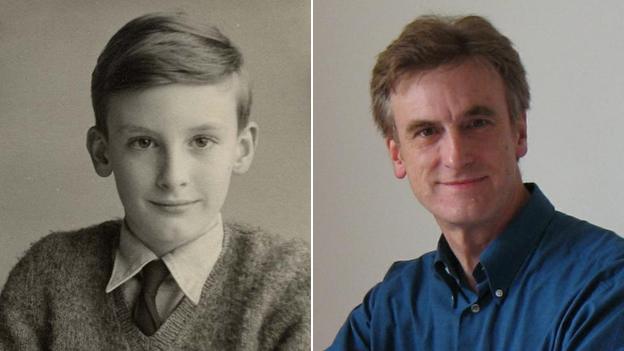
Phil Weatherley as a 10-year-old and now
To some extent poor conduct was carried over from the slums and my school was a rough-house, where it was most cool to not do schoolwork but rather observe the mores and sayings of the parents. The tendency to complain at the architecture forgets the fact we were skint as a nation. At the time we were damned glad to be there in fields, out of the pea-soupers still prevailing in London. It was nirvana for a kid. These towns look shabby now, and a bit sad since they are of my past however I celebrate the good, motivated people who were there to get it done - never mind the occasional monumental concrete monstrosity. Put that down to enthusiasm. Optimism was in the air. Now we have a cynical American ethos thanks to Hollywood and a diet of drivel on the telly. Phil Weatherley, Bournemouth

Norfolk Park estate, Sheffield
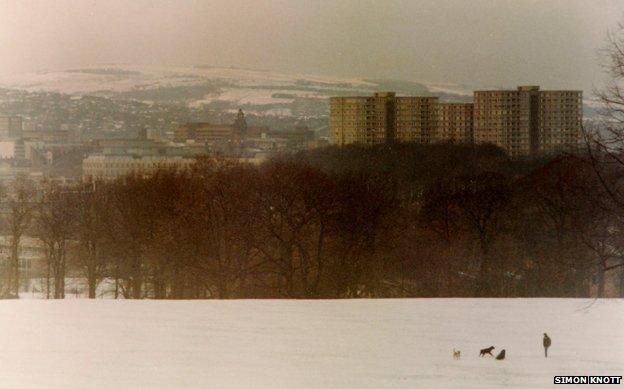
The tower flats at Norfolk Park dominated Sheffield's skyline until they were eventually demolished
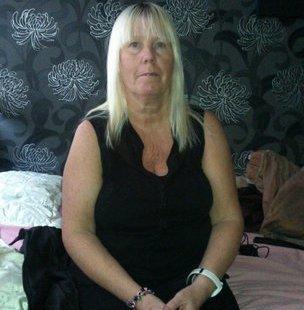
My mum, dad, me and my brother were the second family to move on to the estate around 50 years ago. Then most of the area surrounding our house was just boggy wasteland but it didn't take long for the high-rise flats, houses and maisonettes to be built. The estate was a friendly place with shops and public houses scattered around, with a lovely school and doctors surgery close by. In contrast now, all of the high-rise flats, maisonettes and a lot of houses (mine included) have been demolished to make way for the new school. New building has begun on the land where the properties were demolished. I have been in my own house on Norfolk Park for around 35 years and would hate to have to move out as I have many happy memories and made many, many friends through living on the estate. Julie Matthews, Sheffield
I lived on the Norfolk Park Estate in Sheffield from 1975 until 2011, and the estate has changed a lot. It has changed in good ways and also in bad. When a lot of the buildings on the estate were demolished, a lot of people moved to different areas. Older residents that had lived on the estate for years had to move because nothing was available to them to move into on the estate - they had to move but did not want to and they were the heart of the place. They knew everyone and everyone knew them, everyone watched out for each other's kids and everyone got along. When demolition started, the estate started to deteriorate and people didn't like living in a place where half of the buildings were empty. Business died on the estate for shops and pubs, which led to them closing. Drugs and vandalism on the estate started to increase from a new generation which I believe led to the estate not being a nice place to live. Caroline Dermody, Sheffield
Subscribe to the BBC News Magazine's email newsletter to get articles sent to your inbox.